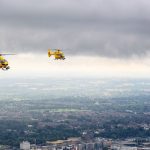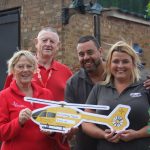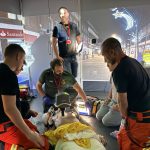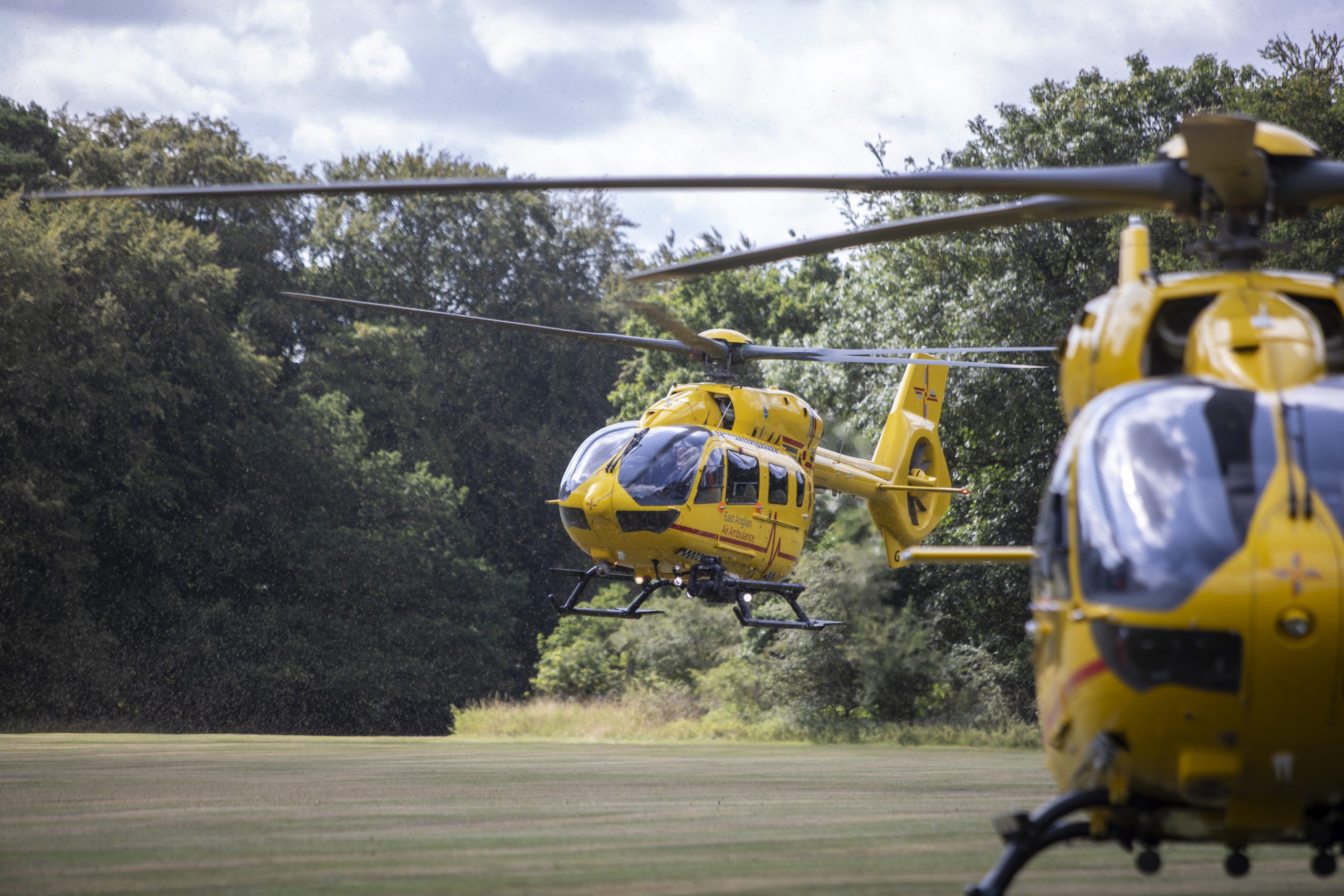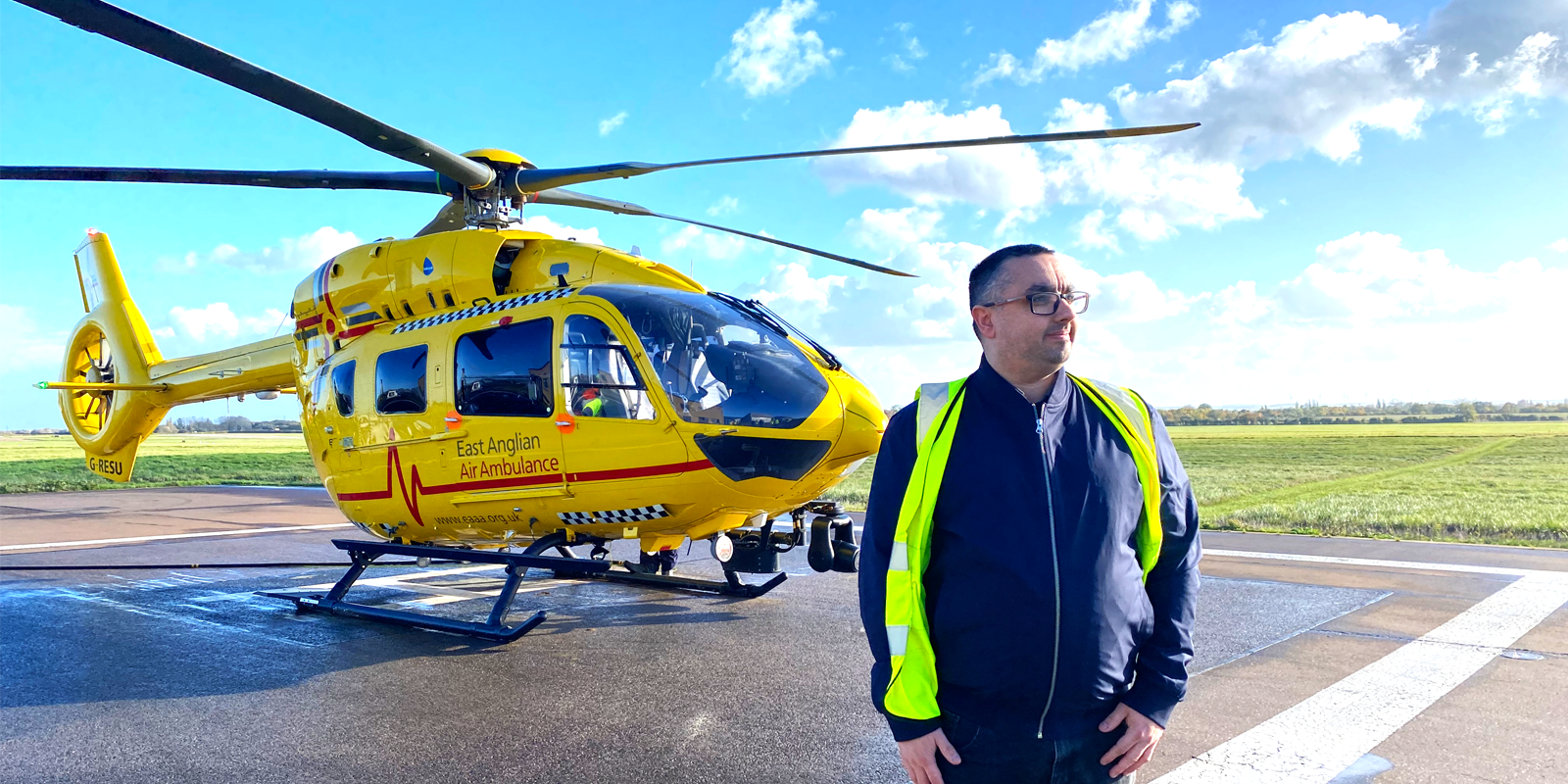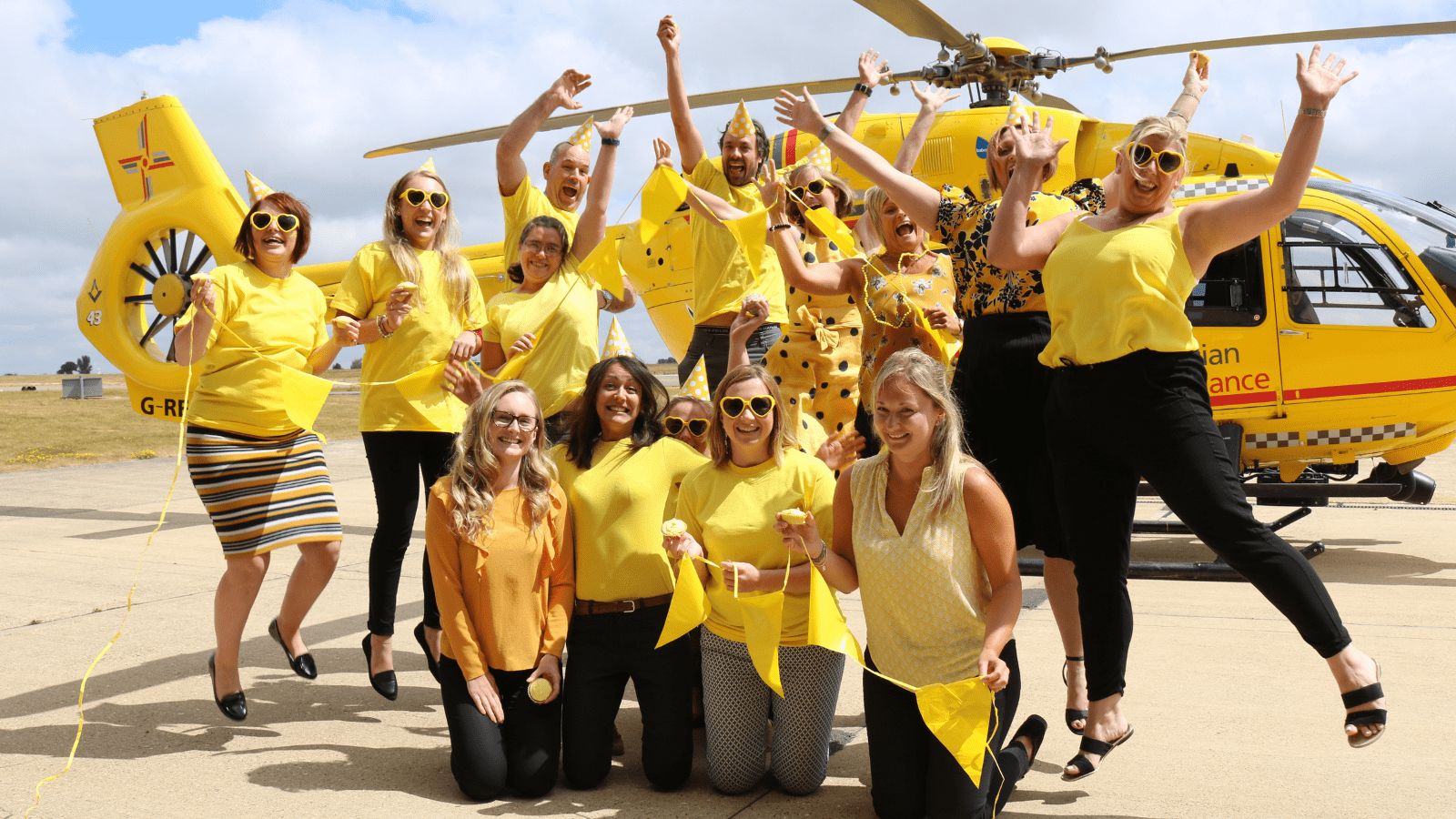23 Oct 2024
Behind the Scenes of a Road Traffic Collision Task
Providing critical care 24/7 by air and road, one of East Anglian Air Ambulance’s (EAAA) most common callouts is to road traffic collisions (RTCs). With these incidents accounting for over one fifth of the emergencies the crews were tasked to last year, we spoke to EAAA Critical Care Paramedic, Luke, to hear more about the considerations when called to an RTC on the region’s road network.
Location, location, location
“RTCs can happen on major roads, in urban areas, or remote and rural locations across the region, therefore, one of the first considerations for the crew is the location. Sometimes it can be tricky for people to pinpoint exactly where they are in a rural area, or during the hours of darkness. When a 999-call is made, the Critical Care Desk (CCD) work hard to identify where crews need to be sent. The app What3Words is an amazing resource for people to have on their phones as it identifies exactly where you are.
It’s important we get to the right place as quickly as possible so that we can get urgent critical care to somebody in need. Some places are accessible, some are more challenging, so we always ask how close we can get to the scene while keeping ourselves, the patient, other emergency services and bystanders safe. We will ask if there is an increased risk to crew safety (if hazardous materials are involved in the RTC, for example) and will always consider the downwash of the helicopter. We also have special RTC helmets and goggles to wear at the scene to manage our own safety.”
Planning and landing
“On the way to the scene of the RTC and the injured patient(s), we will get as much information as possible from the CCD about the type of incident. We call this the mechanism of injury. It helps us to understand the forces involved in the collision, such as a lorry versus a car, or a car versus a pedestrian. This information supports us when we consider injury patterns, so we can continue planning treatment and care en-route to the patient.
If the RTC is on a major road and we are travelling by helicopter, we will often land in a field nearby. Landing the aircraft on the road itself means that both carriageways need to be closed to mitigate the risks to onlookers. However, road closures can take time and resources; landing in a field nearby is often just as fast and accessible for us as a crew. Should a patient later need to be transferred to the helicopter, the pilots and police will work together to move the aircraft closer, safely.”
Enhanced treatment and care
“Because we are tasked by the ambulance service, we are not usually the first on scene. EAAA will be tasked to the most serious incidents, where we can support our ambulance service colleagues by providing additional skills, medication and equipment. EAAA doesn’t just transport people to hospital by helicopter. The highly skilled doctors and critical care paramedics of EAAA can, for example, administer stronger pain relief, and can carry out potentially life-saving interventions and surgery. If a patient is very poorly, we can provide a pre-hospital emergency anaesthetic, or perform a blood transfusion if somebody has suffered traumatic injuries and severe blood loss.
These interventions are above and beyond what the ambulance service can provide at the scene. Seriously injured and unwell patients receiving critical care as early as possible gives them the best chance of survival.”
Collaborative working
“At an RTC, different agencies, including ourselves, the ambulance service, police and fire brigade, all have pivotal roles in the management of the scene. Collaboration is key.
At complex incidents, we will liaise with an Incident Commander and the ‘JESIP Principles’ will be applied; these are straightforward principles for joint working when actions and decisions need to be taken promptly, often in a chaotic environment which is rapidly changing.
We will always take a handover from the Incident Commander or the ambulance service (unless we are first on scene). This is especially important in multi-casualty incidents as it will help us determine where the critical care we can provide is needed most.”
Reading the wreckage
“We always carry out a primary assessment of the patient to determine their injuries and the best treatment and care we can provide for them. At RTCs, we will also survey the scene and ‘read’ the wreckage too. It doesn’t over-ride what we see and learn when we assess the patient, but it can often provide clues about the forces involved and what injuries the patient may have suffered as a result.”
Support along difficult path
“Often the trauma injuries caused by RTCs are just the beginning of a challenging path ahead for a patient.
The crew provide treatment and care in the immediate phase at an incident. We may have flown them, or accompanied them by land ambulance, to the most appropriate hospital for their injuries and ongoing care, but what follows can be equally as hard. They could require surgery, pain management and long periods of rehabilitation. EAAA can still support them; our dedicated team of Aftercare clinicians is available to support former patients and their families through these next phases. It can help them come to terms with what happened, understand the care that was provided at scene, offer practical and emotional support, or signpost them to specialist organisations, in the turbulent aftermath of a life-changing incident.
The Aftercare team can also facilitate meetings for patients and families to reconnect with the crew who attended them. These are always incredibly moving and special moments for everyone involved and are made possible thanks to the people who continue to the support and champion the work of the EAAA. They are the true life-savers of the charity.”
